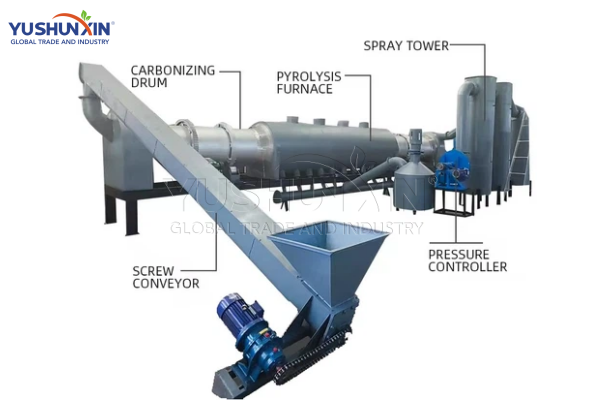Coconut shell charcoal is a highly sought-after product due to its eco-friendly nature and versatile applications. It is used for fuel, activated carbon production, and in various industrial processes. The journey from raw coconut shells to high-quality charcoal involves several meticulous steps. This passage delves into the comprehensive process of making coconut shell charcoal, highlighting the key stages and machinery involved.

Collection and Cleaning of Coconut Shells
The process begins with the collection of coconut shells, which are often a byproduct of coconut processing industries. Once gathered, the shells must be thoroughly cleaned to remove any residual coconut meat, fibers, and dirt. This step is crucial as impurities can affect the quality of the final charcoal product. A combination of manual labor and mechanical cleaning equipment is typically employed to ensure the shells are free of contaminants.
Drying the Coconut Shells
After cleaning, the coconut shells must be adequately dried to reduce their moisture content. Drying is vital because high moisture levels can hinder the carbonization process and lower the efficiency of charcoal production. Natural sun drying or industrial drying machines can be used, depending on the scale of production. Ensuring the shells are sufficiently dried enhances the overall quality and yield of the charcoal.
Carbonization Process
The heart of coconut shell charcoal production is the carbonization process. This involves converting the dried coconut shells into charcoal by heating them in an oxygen-limited environment. Traditionally, this is done in earthen kilns or brick-lined pits. However, modern production facilities often use industrial carbonization furnaces or retorts, which offer better control over the temperature and process environment. The shells are subjected to temperatures ranging from 400°C to 800°C, leading to the breakdown of organic material and formation of charcoal.
Cooling and Collection
Once carbonization is complete, the coconut shell charcoal needs to be cooled before further handling. Rapid cooling can cause the charcoal to crack, so it is usually left to cool gradually in the kiln or furnace. After cooling, the charcoal is collected, often resulting in larger pieces that need to be broken down into smaller, uniform sizes. This is typically done using crushing and sieving machinery, ensuring the charcoal is suitable for its intended applications.
Packaging and Storage
The final step in the coconut shell charcoal production process is packaging and storage. The charcoal is packed in moisture-proof bags or containers to preserve its quality and prevent it from absorbing humidity from the environment. Proper packaging ensures that the charcoal remains dry and retains its efficiency as a fuel or raw material. Storage facilities must be dry and well-ventilated to further protect the charcoal from moisture and other environmental factors.
Conclusion
The production of coconut shell charcoal is a multi-step process that transforms waste into a valuable product with numerous applications. Each stage, from collection and drying to carbonization and packaging, plays a critical role in determining the quality and usability of the charcoal. As demand for sustainable and eco-friendly products grows, the production of coconut shell charcoal stands as a testament to the innovative use of natural resources, contributing to both economic and environmental well-being. Visiting: https://www.ysxcharpro.com/product/coconut-shell-charcoal-line/
Leave a Reply